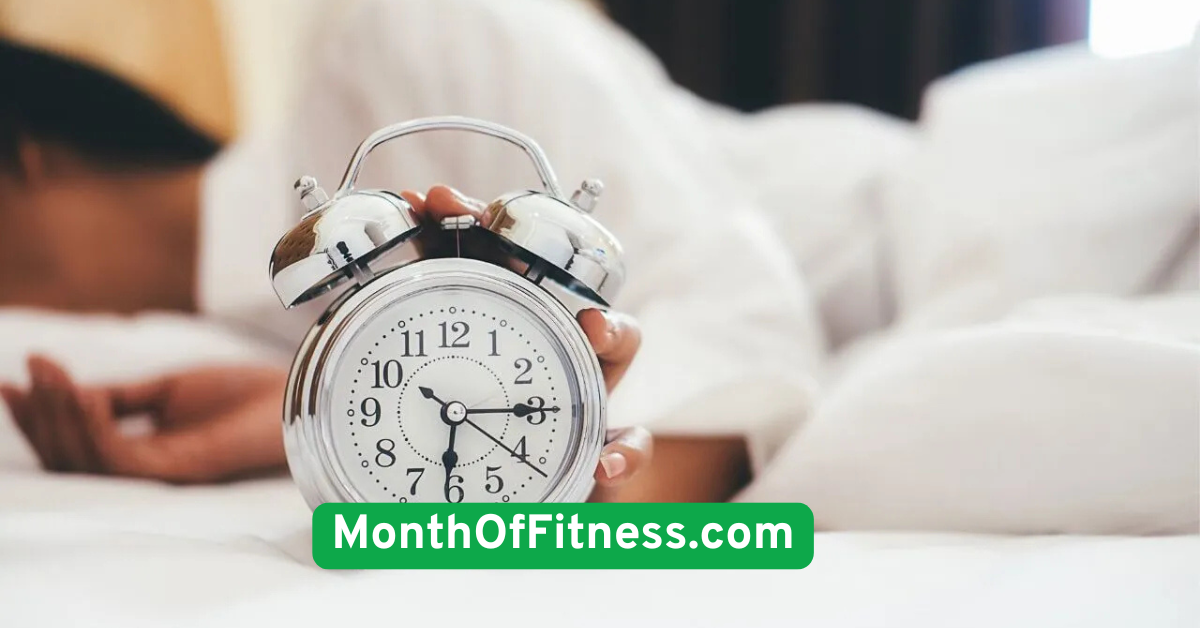One-Month Fitness Challenge: Easy to Build Healthy Habits
Start your fitness journey with a one-month challenge to build lasting healthy habits. Discover easy workouts, meal plans, and tips to kickstart your fitness goals and improve your well-being. Ready to transform your health and well-being? A one-month fitness challenge is a great way to kickstart your journey toward building lasting, healthy habits. It doesn’t matter if you’re a fitness beginner or just looking for a way to break free from an exercise rut—this challenge is for you! By dedicating just one month to focusing on your physical health, you’ll set a foundation for a lifetime of fitness.
In this article, we’ll guide you through a simple yet effective plan to help you develop sustainable fitness habits. From full-body workouts to meal prep tips, and staying motivated throughout, we’ll cover everything you need to make this month count. You’ll soon see how easy it is to take small steps each day that add up to big results. Ready to get started? Let’s dive into your one-month fitness challenge!
1. Setting Realistic Fitness Goals for the Month
One of the most important steps in any fitness journey is setting clear, achievable goals. Without goals, it’s easy to lose track and feel discouraged. Start by outlining both short-term and long-term objectives for the month. Short-term goals could include improving your stamina, losing a few pounds, or simply being consistent with your workouts. Long-term goals might involve reaching a particular weight, achieving a fitness milestone, or adopting a completely new healthy lifestyle.Tracking progress is key to staying motivated. Whether through a fitness app or a simple journal, documenting your daily workouts, meals, and how you feel will help you reflect on your success and areas for improvement. Remember, fitness is a journey, not a race—focus on steady progress and celebrate small wins along the way

2. Getting Started: The Importance of a Warm-Up Routine
Before diving into your workouts, warming up your body is essential. A good warm-up prepares your muscles, increases blood flow, and reduces the risk of injury. Even a 5-10 minute warm-up can make a world of difference in your performance.Incorporate dynamic stretches, like arm circles or leg swings, to loosen up your body. Gentle cardio moves, such as jumping jacks or brisk walking, can also get your heart rate up and prepare your muscles for more intense activity. It’s not just about avoiding injury—it’s about optimizing your workout for maximum results. And, trust us, your body will thank you for it later!

3. A Beginner-Friendly Full Body Workout Plan
If you’re new to fitness or haven’t been consistent with your routine, start with simple yet effective full-body workouts. These exercises will target multiple muscle groups, helping you get the most out of your workout in a shorter amount of time.Try bodyweight exercises like squats, lunges, push-ups, and planks. These are perfect for beginners because they require no equipment and can be done anywhere, whether at home or in the park. Aim for 3 sets of each exercise, gradually increasing the reps as you gain strength. For example, start with 10 push-ups and work your way up to 20 over time.Full-body workouts build a solid foundation for strength and flexibility, making it easier to progress to more challenging exercises as your fitness improves.

4. Building a Morning Routine to Kickstart Your Day
A successful day starts with a positive morning routine. Incorporating fitness into your mornings not only boosts energy levels but also sets a productive tone for the rest of the day. Whether it’s a 10-minute yoga session, a brisk walk, or some light stretching, find what works for you.Research shows that people who work out in the morning are more consistent with their exercise routines. If mornings are hectic, prepare the night before. Lay out your workout clothes, set your alarm 30 minutes earlier, and get ready to make the most of your mornings.

5. Meal Planning for Fitness Success
Building healthy habits isn’t just about exercise—it’s also about nourishing your body with the right foods. Meal planning can save you time, reduce stress, and help you stay on track with your fitness goals. Plan your meals ahead of time to avoid the temptation of unhealthy options when hunger strikes.Focus on whole, nutrient-dense foods. Incorporate lean proteins like chicken, tofu, or beans, along with plenty of vegetables, fruits, and whole grains. A healthy, balanced diet will fuel your workouts and promote overall well-being. Batch cooking and prepping meals for the week can also ensure you have nutritious options ready to go, making it easier to stick to your fitness plan.

6. Hydration: A Key to Fitness Success
Proper hydration plays a critical role in your fitness journey. Dehydration can lead to fatigue, muscle cramps, and reduced performance, so it’s crucial to stay hydrated throughout the day.Aim to drink at least 8 cups of water a day, and more if you’re working out intensely. You can also hydrate with herbal teas or coconut water for variety. If you find plain water boring, add a slice of lemon or cucumber for flavor. Proper hydration helps maintain energy levels and ensures your muscles and joints are working efficiently during your workouts.

7. Rest and Recovery: Why You Should Never Skip It
Many people overlook the importance of rest and recovery, thinking that more workouts lead to better results. However, rest days are just as crucial as workout days. They allow your muscles to recover, repair, and grow stronger.Incorporate at least one or two rest days each week, depending on your intensity. This doesn’t mean lying on the couch all day—it could mean engaging in low-impact activities like walking or gentle stretching. Quality sleep is also vital for recovery, as it helps your body repair tissues and replenish energy stores.

8. Staying Motivated Throughout the Month
Staying motivated throughout the month can be a challenge, especially when you hit a plateau or life gets busy. Keep your motivation high by setting mini-goals. For example, try to increase your push-up count by 5 every week or take an extra lap around the track. Celebrate these small victories to stay motivated.Consider finding an accountability partner or joining a fitness group online to stay connected and encouraged. Tracking your progress in a fitness journal or app can also give you a visual reminder of how far you’ve come.

9. The Power of Strength Training for Beginners
Strength training is a game-changer for overall fitness. It helps build lean muscle, boosts metabolism, and improves bone health. Don’t be intimidated by weights or resistance bands—there are plenty of beginner-friendly strength exercises to start with.Incorporate exercises like squats, lunges, and push-ups into your routine, then gradually add weights as you become more comfortable. Strength training will not only sculpt your body but also improve endurance and flexibility, making your workouts more efficient in the long run.

10. Cardiovascular Workouts to Improve Endurance
Cardio exercises are essential for building stamina and improving heart health. Whether you enjoy running, cycling, or dancing, there are many ways to get your heart pumping.If you’re just starting out, try walking briskly for 20-30 minutes a few times a week. As you build stamina, increase the intensity or try different cardio activities to keep things interesting. Aim for at least 150 minutes of moderate cardio each week to improve overall endurance.

11. The Importance of Flexibility and Mobility
Flexibility and mobility are often overlooked but are key components of any fitness routine. Stretching regularly helps reduce muscle stiffness, improve posture, and prevent injury. Incorporate dynamic stretches before your workouts and static stretches afterward.You don’t have to be a gymnast to benefit from flexibility exercises. Simple stretches like hamstring stretches, arm circles, and chest openers can make a big difference in your range of motion. Plus, they’ll leave you feeling relaxed and rejuvenated.

12. Tracking Your Progress and Adjusting Your Routine
One of the best ways to stay on track is by tracking your progress. Use fitness apps, wearables, or even a notebook to monitor your workouts, meals, and overall health. Tracking helps you see where you’ve made improvements and where you may need to adjust your routine.Don’t be afraid to modify your fitness plan based on your progress. If an exercise becomes too easy, increase the intensity. If you’re not enjoying certain workouts, try something new! The key is to keep things fresh and challenging.
![]()
13. Building Healthy Habits Outside the Gym
Fitness isn’t confined to the gym—it’s about incorporating healthy habits into your daily life. Take the stairs instead of the elevator, walk or bike instead of driving, or stretch while watching TV. Small changes like these add up over time and contribute to your overall fitness.Remember, health is not a destination; it’s a lifestyle. Look for opportunities throughout your day to stay active and make healthier choices.

14. Overcoming Setbacks and Staying on Track
Setbacks are inevitable, but they don’t have to derail your fitness progress. Missed workouts, bad eating days, or feeling unmotivated happens to everyone. What matters is how you bounce back.Instead of focusing on past mistakes, focus on what you can do today. Take one step at a time, and don’t be too hard on yourself. Resilience is a key part of building healthy habits, and even a small effort can make a big difference.

15. Celebrating Your Success at the End of the Challenge
Completing your one-month fitness challenge is a huge accomplishment! Take time to reflect on your progress and celebrate your achievements. Whether it’s treating yourself to a new workout outfit or enjoying a fun, healthy meal, recognize your hard work.Now that you’ve completed the challenge, it’s time to set new fitness goals for the next month. Keep the momentum going and continue building on the healthy habits you’ve created!

Conclusion
Congratulations on completing your one-month fitness challenge! By now, you’ve established healthy habits that will serve as the foundation for a lifetime of fitness. Remember, the journey doesn’t end here—it’s about making consistent progress and staying committed to your goals. Whether you’re looking to build muscle, increase endurance, or simply live a healthier lifestyle, continue pushing yourself and enjoy the process.





